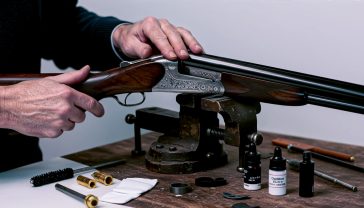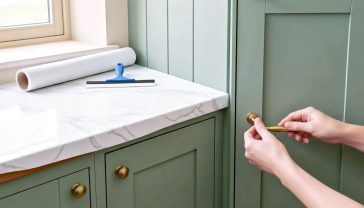From Pub to Patio: The Ultimate UK Guide to Wall-Mounted Bottle Openers
The definitive guide to wall-mounted bottle openers. Learn why this simple tool is a must-have for any British kitchen, garden, or home bar.

This post may contain affiliate links. If you make a purchase through these links, we may earn a commission at no additional cost to you.
Picture this: you’re at a friend’s barbecue on a rare sunny British afternoon. The sausages are sizzling, the chat is flowing, and someone hands you a cold bottle of craft beer. You pat your pockets. No opener. You scan the kitchen surfaces. Nothing. Just as you’re about to resort to using a spoon handle (we’ve all been there), your friend grins and points to a small, sturdy metal object fixed to the wall by the back door. With a satisfying psst-clink, your bottle is open. Simple, efficient, and always there when you need it.
That, in a nutshell, is the magic of the wall-mounted bottle opener. It’s more than just a gadget; it’s a permanent solution to a recurring problem. It’s a small slice of pub culture brought into our homes, gardens, and man caves. For something so simple, it has a surprisingly rich history and a whole world of styles, materials, and stories behind it.
This guide is your complete journey into the world of the wall-mounted bottle opener. We’ll look at where it came from, how it works, what it’s made of, and why it’s become such a beloved fixture in British homes. Whether you’re a DIY enthusiast looking for a new project, a homeowner wanting to add a touch of practical style, or just someone who’s sick of hunting for that elusive handheld opener, you’re in the right place. Let’s dive in.
What Exactly Is a Wall-Mounted Bottle Opener?
At its heart, a wall-mounted bottle opener is a simple machine. It’s a type of lever, designed to do one job and do it perfectly: remove the metal crown caps from glass bottles. Unlike its portable cousins that get lost in drawers or left behind at picnics, this one is permanently fixed to a solid surface—a wall, a kitchen cabinet, a fence post, even the side of a garden bar.
Its design consists of two main parts:
- The Base Plate: This is the part that screws into the wall. It needs to be strong and secure to handle the force of opening a bottle. It usually has two or more screw holes for a sturdy fit.
- The Opener Lip (or Tooth): This is the sharp, hardened edge that slips under the rim of the bottle cap. As you pull the bottle downwards, this lip catches the cap and the lever action prises it off.
The beauty of the design is its sheer simplicity and strength. Because it’s anchored to a wall, you can use it one-handed, which is perfect when you’re carrying a tray of drinks or have your hands full at a party. There are no moving parts to break, no batteries to replace. It’s a tool built to last a lifetime.
Why You Need One in Your Life
You might be thinking, “I already have a bottle opener on my Swiss Army knife, another on my corkscrew, and probably three more rattling around in the kitchen drawer. Why do I need another one screwed to my wall?”
It’s a fair question. But the wall-mounted opener isn’t just about function; it’s about convenience, permanence, and a touch of style.
- It’s Always There: Think of it like the light switch. You never have to search for it. It has a designated spot and it’s always ready for action. No more frantic searching through the cutlery drawer five minutes before your guests arrive.
- One-Handed Operation: This is a bigger deal than it sounds. Juggling a bottle and a handheld opener can be clumsy. With a wall-mounted one, you hold the bottle, position the cap, and pull down. It’s a smooth, effortless motion.
- It Protects Your Stuff: We’ve all seen someone try to open a bottle on the edge of a nice wooden table or a kitchen worktop, leaving a dent or a scratch behind. A wall-mounted opener provides a safe, designated spot for the job, protecting your furniture from damage.
- It Adds Character: These openers are a statement piece. A rustic cast iron opener can add a vintage touch to your kitchen. A sleek stainless steel one can look sharp and modern in an outdoor bar area. They’re a conversation starter and a reflection of your personality.
In a world full of complex gadgets, there’s something deeply satisfying about a simple tool that does its job flawlessly, every single time.
A Quick History of the Bottle Opener
To understand our wall-mounted hero, we need to go back to the invention that made it necessary: the bottle cap.
Before the 1890s, bottles were sealed with all sorts of things—corks, porcelain stoppers with wire cages (like you still see on some fancy lemonade bottles), and other contraptions. They were often reusable but not very good at keeping fizzy drinks, like beer and soda, from going flat.
The Crown Cork: A Fizzy Revolution
Everything changed in 1892 when an American inventor named William Painter patented the “Crown Cork.” This was the simple, disposable metal cap with a cork or plastic lining that we know today. It was a brilliant invention because it created a perfect seal, keeping the fizz locked in and the contents fresh. It was cheap to make and easy to apply in factories.
There was just one problem: how did you get it off?
Painter knew this would be an issue, so along with the Crown Cork, he also invented a tool to remove it: the bottle opener. His first designs were handheld, often given away by breweries as promotional items. They were a clever bit of marketing—every time someone opened a bottle of their beer, they’d see the brewery’s name.
From Handheld to Wall-Mounted
It didn’t take long for people to realise that a fixed opener would be even more convenient, especially in places that opened hundreds of bottles a day. Pubs, bars, and soda fountains were the first to adopt wall-mounted openers. They were usually installed behind the bar, allowing bartenders to open bottles quickly and efficiently without having to search for a tool.
These early wall-mounted openers were heavy, functional, and built to withstand constant use. They were often made of cast iron and had simple, no-nonsense designs. Many of them featured the name of a popular brewery, like Bass or Guinness, cast directly into the metal, turning them into permanent advertisements.
After the Second World War, as home refrigeration became common and people started drinking more bottled beer and soft drinks at home, the wall-mounted opener made its way into domestic kitchens. It became a symbol of modern convenience, a small but useful piece of household technology.
Today, while handheld openers are more common, the wall-mounted version has enjoyed a comeback. It’s seen as a retro, stylish, and incredibly practical addition to modern homes, connecting us to that golden age of pub culture and simple, well-made tools.
The Anatomy of a Great Wall-Mounted Opener: Materials and Design
Not all wall-mounted bottle openers are created equal. The material they’re made from and the design they feature can make a big difference to how they look, feel, and perform. Let’s break down the most common options you’ll find in the UK.
The King of Materials: Cast Iron
When you picture a classic, old-school wall-mounted opener, you’re probably thinking of one made from cast iron.
- What is it? Cast iron is a hard, heavy, and incredibly durable alloy of iron that has been melted, poured into a mould, and allowed to cool. It’s the same stuff they use to make traditional postboxes, park benches, and cookware.
- Why it’s great: It is virtually indestructible. A good cast iron opener will likely outlast the wall it’s attached to. Its weight gives it a feeling of quality and permanence. The moulding process also allows for intricate designs, from simple, classic shapes to novelty openers shaped like animals or logos.
- The Look: Cast iron gives you that authentic, rustic, vintage feel. It’s perfect for traditional kitchens, country pubs, garden sheds, and man caves. It often develops a lovely patina over time, especially when used outdoors.
- Downsides: It can rust if the finish wears off and it’s exposed to the British weather. However, many people feel this just adds to its rustic charm.
Sleek and Modern: Stainless Steel
For a more contemporary look, stainless steel is a fantastic choice.
- What is it? An alloy of steel and chromium, stainless steel is famous for its resistance to rust and corrosion.
- Why it’s great: It’s hygienic, easy to clean, and completely weatherproof. This makes it the perfect choice for modern kitchens, outdoor bars, and coastal homes where the salty air can be a problem for other metals. It’s also very strong and won’t bend or break.
- The Look: Stainless steel offers a clean, minimalist, and professional aesthetic. It pairs well with modern appliances and design schemes. You can get it in a brushed or polished finish, depending on the look you’re going for.
- Downsides: It can show up fingerprints and water spots, so it might need a quick wipe now and then to keep it looking its best.
Other Metal Options
While cast iron and stainless steel are the most popular choices, you’ll also find openers made from other metals:
- Zinc Alloy: This is a common material for more detailed and novelty designs. It’s easy to cast and can be plated with other finishes like chrome, brass, or bronze to give it a different look. It’s not quite as tough as cast iron but is perfectly strong enough for the job.
- Brass: Solid brass openers have a beautiful, warm, golden colour that develops a rich patina over time. They have a classic, nautical, or steampunk vibe and look fantastic against dark wood or painted brick.
- Aluminium: Lightweight and rust-proof, aluminium is another good option for modern or outdoor openers. It’s not as common but offers a sleek, industrial look.
Beyond the Metal: Designs with Backboards
Many modern wall-mounted openers come attached to a wooden or slate backboard. This isn’t just for looks; it serves a very practical purpose.
- Protecting Your Wall: The backboard provides a barrier between the metal opener and your wall, preventing scratches, dents, and greasy marks over time.
- Easier Installation: Sometimes, it’s easier to get a secure fixing into a wooden board than it is into plasterboard or crumbly old brick.
- Personalisation: The backboard is a blank canvas for customisation. You can find them engraved with names, funny quotes (“The best beer is an open beer”), or logos. It’s a great way to make the opener a truly personal item.
- The Cap Catcher: This is the killer feature. Many backboard designs include a small box, bucket, or magnetic plate at the bottom to catch the bottle caps as they fall. No more bending down to pick them up off the floor! This simple addition turns a good tool into a brilliant one.
Choosing the Perfect Spot: Where to Install Your Opener
You’ve chosen your perfect opener. Now for the most important decision: where to put it? The right location will make it a joy to use, while the wrong one will make it an awkward inconvenience.
Here are the key things to consider:
1. The Holy Trinity of Placement: Kitchen, Garden, and Man Cave
These three locations are the most popular and practical spots for a wall-mounted opener.
- The Kitchen: This is the heart of the home and often where drinks are prepared. Good spots include the side of a sturdy kitchen cabinet (not the door!), on a solid wall near the fridge, or on a wooden pantry surround. Think about the flow of your kitchen—place it somewhere that’s easy to get to but not in the way of a busy walkway.
- The Garden or Patio: An outdoor opener is a game-changer for barbecues and summer parties. Mount it on a solid fence post, the side of a shed, a brick wall, or as part of a dedicated garden bar. Make sure you choose a weatherproof material like stainless steel or a well-finished cast iron.
- The Man Cave, Home Bar, or Games Room: This is the natural habitat of the wall-mounted bottle opener. It’s a functional accessory that adds to the room’s atmosphere. Mount it near your beer fridge or seating area for maximum convenience.
2. Think About the Surface
The surface you’re mounting it on is crucial. It needs to be solid and stable.
- Solid Wood: Ideal. The side of a kitchen unit, a wooden beam, or a sturdy shed wall are all perfect. The wood provides a great anchor for the screws.
- Brick or Masonry: Also excellent. This will give you a rock-solid installation that will never come loose. You’ll need a drill with a masonry bit and the right kind of wall plugs (more on that in a bit).
- Plasterboard: Tricky, but possible. Standard plasterboard is not strong enough on its own to hold an opener that will have force applied to it. You have two options:
- Find a Stud: Use a stud finder to locate the wooden stud behind the plasterboard and screw directly into that. This is the most secure method.
- Use Heavy-Duty Fixings: If you can’t find a stud, you’ll need specialised plasterboard fixings, like toggle bolts or heavy-duty self-drilling anchors, that spread the load behind the board. Standard wall plugs won’t cut it.
3. Height is Everything
Get the height wrong, and your opener will be awkward to use. The ideal height is one that allows you to open a bottle with a comfortable, downward motion without having to bend down or reach up too high.
A good rule of thumb is to mount it so the top of the opener is roughly 4 to 5 feet (120-150cm) from the floor.
However, the best way to find the perfect height is to test it out. Hold the opener against the wall and pretend to open a bottle. Find a height that feels natural and comfortable for you. If there’s a big height difference between the people in your house, find a happy medium.
4. Don’t Forget the Aftermath: The Cap Zone
When you open a bottle, the cap is going to fall straight down. Think about where it will land.
- Avoid Cluttered Areas: Don’t install your opener directly above a shelf full of delicate ornaments or a fruit bowl.
- The Bin is Your Friend: Installing it near a recycling bin is a smart move. You can open the bottle and drop the cap straight in.
- Get a Cap Catcher: This is the ultimate solution. An opener with a built-in cap catcher keeps everything neat and tidy. If your opener doesn’t have one, you can easily place a small pot or magnetic dish underneath it to do the same job.
How to Install Your Wall-Mounted Bottle Opener: A Simple DIY Guide
Installing a wall-mounted bottle opener is a quick and easy DIY job that anyone can do. It should only take you about 10-15 minutes. Here’s a step-by-step guide.
What You’ll Need:
- Your wall-mounted bottle opener (it should come with screws)
- A pencil
- A spirit level (optional, but recommended for a professional-looking finish)
- A drill
- A drill bit (the size will depend on your screws and wall type)
- A screwdriver (or a screwdriver bit for your drill)
- Wall plugs (if mounting on brick or masonry)
- A stud finder (if mounting on plasterboard)
Step 1: Mark Your Spot
Hold the opener against the wall in your chosen location. Use the spirit level to make sure it’s perfectly straight—a wonky opener will bug you forever!
Once you’re happy with the position, use your pencil to mark the centre of each screw hole on the wall.
Step 2: Drill the Pilot Holes
Now it’s time to drill. The type of hole you drill depends on the wall surface.
- For Solid Wood: Choose a drill bit that is slightly smaller than the shank of your screw (the solid part, not the threads). Drill a pilot hole at each of your pencil marks. This will stop the wood from splitting when you put the screw in.
- For Brick or Masonry: Use a masonry drill bit that’s the same size as your wall plug. Drill a hole deep enough for the plug to sit flush with the wall.
- For Plasterboard (into a stud): Treat it like solid wood. Use a small wood drill bit to drill a pilot hole into the stud.
- For Plasterboard (with heavy-duty fixings): Follow the instructions that came with your specific fixings. Some require a small pilot hole, while others are self-drilling.
Top Tip: Before you drill, stick a folded sticky note to the wall just below where you’re drilling. It will catch most of the dust, saving you a cleaning job later.
Step 3: Insert Wall Plugs (if needed)
If you’re mounting on brick or masonry, push a wall plug into each of the holes you drilled. Tap them gently with a hammer until they are flush with the wall surface.
Step 4: Screw it In!
Now for the final step. Hold your bottle opener over the holes, lining it up with your pilot holes or wall plugs.
Using your screwdriver or drill, drive the screws in until they are tight and the opener is firmly secured to the wall. Don’t overtighten them, as you could damage the screw head or the wall, but make sure there’s no wobble at all.
Step 5: The Inaugural Opening
That’s it! You’re done. The only thing left to do is grab a cold bottle of your favourite drink and test out your handiwork. Cheers!
Keeping Your Opener in Top Condition
One of the best things about wall-mounted bottle openers is how low-maintenance they are. However, a little bit of care now and then will keep yours looking and working its best for years to come.
- For Stainless Steel: Simply wipe it down with a damp cloth to remove any spills or fingerprints. For a shiny finish, use a little bit of glass cleaner or a dedicated stainless steel cleaner.
- For Cast Iron: If your opener is indoors, it will rarely need more than a quick dust. If it’s outdoors and starts to show signs of rust, you have two options. You can either embrace the weathered, rustic look, or you can give it a quick clean-up. Use some fine wire wool to gently remove the surface rust, then wipe it with a cloth lightly dampened with vegetable oil or apply a coat of clear lacquer to protect it from the elements.
- For Openers with Wooden Backboards: Just wipe the wood with a damp cloth if it gets dirty. If the wood starts to look dry, especially if it’s outdoors, you can treat it with a bit of wood oil (like teak or danish oil) to restore its finish and protect it from the weather.
The Future of the Bottle Opener: Is it Here to Stay?
In an age of screw caps and ring pulls, you might wonder if the humble bottle opener still has a place. While it’s true that many drinks now come in more convenient packaging, the classic crown cap is far from dead.
The craft beer revolution, in particular, has seen a huge resurgence in bottled beer. Small, independent breweries across the UK often choose bottles and crown caps because they offer better protection from light and oxygen, preserving the flavour of the beer. For beer lovers, a good bottle opener is as essential as a good glass.
The wall-mounted opener, in particular, has found a new life not just as a tool, but as a piece of décor. It taps into a nostalgia for simpler times, for the local pub, and for well-made, long-lasting products. It’s a small act of rebellion against a throwaway culture.
So, is the wall-mounted bottle opener here to stay? Absolutely. As long as there are fizzy drinks in glass bottles and people who appreciate a simple, reliable, and stylish tool, it will always have a home on our walls. It’s a small, permanent fixture that brings a little bit of convenience, a touch of character, and a whole lot of satisfaction every time you hear that familiar psst-clink.
Further Reading
For those interested in the history of brewing, industrial design, or just want to see some cool vintage openers, here are a few excellent resources:
- The Brewery History Society: A fantastic resource for anyone interested in the history of British brewing and pub culture.
- The Victoria and Albert Museum (V&A) Online Collection: Search their collection for examples of industrial design from the late 19th and early 20th centuries.
- ProBrewer: A forum and resource for the professional brewing industry, with insights into modern bottling and packaging.






